|
Memphis Queensware Co |
|
...and
the Historic
Haviland Queensware |
|
|
|
|
|
 |
The Queensware Building is an outstanding commercial
Romanesque building on Memphis' Main Street which dates from
1881. It was built by the Lemmon and Gale Wholesale Dry
Goods Company and was originally called "The Lemmon-Gale
Building". They were the largest Dry Goods store in
Memphis for many years. In 1896 the Memphis
Queensware Company moved to the building and occupied 1/2 of
it along with Lemmon-Gale. During this period, some very
fine China was made by a major porcelain house of France and
marketed as "Memphis Queensware". Today it is still very
collectible. Somewhere in time the building also became known
as "The Queensware Building". |
|
|
| |
| |
| |
|
Story of Queens Ware |
|
"Queens Ware" is a
cream-colored English china that was first made by Wedgewood
of London in 1750. It's popularity owes more to
wedgewood's
skill as businessmen than as potters. They
presented Queen Charlotte with a tea set of the new ware and
that produced a "Royal Appointment" for them in 1765. They
immediately named their cream-colored tableware "Queens Ware"
and its popularity was assured. |
 |
 |
| |
Wedgewood
Queens Ware |
Queens Ware Mark |
|
| |
|
David
Haviland and the Haviland-Limoges Factory
In 1840, David Haviland and
his brother Daniel had a china shop in NYC. David wanted to
establish an alliance with a European manufacturer who
would create quality porcelain ware for the American trade. Wedgewood
turned him down - either take their Queens Ware designs, as is
- or nothing. |
 |
| |
David
Haviland |
|
| |
 |
David knew about the fine clay of Limoges,
France and decided to established his company there. He
moved his family to Limoges in 1853. The Haviland Company
became the first to have artists on
site, to do the decorating. Haviland soon began
producing fine China at Limoges - and particularly a
very fine Queensware.
He had now united
the two words.
After the
Civil War, David sent his son Theodore to the U.S. to handle
distribution and marketing. Production dramatically
increased. The American Victorian housewife became the
primary customer with a great variety of patterns to choose
from. |
|
Haviland Factory in Limoges |
|
|
| |
 |
 |
 |
 |
 |
| France Map |
Limoges
today |
Limoges
1900 |
Vinage
Limoges |
Haviland
Factory |
|
| |
|
Like all the other Haviland
offspring, Theodore also began his own company in 1893.
He started the practice that if a store
ordered a certain amount of china, the store name was added as
part of the back mark. Sometimes an exclusive special
border or gold trim might also be added - especially if a
pattern was made exclusively for a particular store.
Thus the period began for the "Memphis Queensware Company,
Memphis, Tennessee" mark beneath the Haviland - Limoges mark.
Like his father, Theodore was committed to artistic
innovation. |
 |
|
| |
|
But in typical French fashion, David Haviland's offspring continued to
branch out with their own porcelain companies to compete with one
another. Now, 150 years later, there are many divisions and
mergers within the Haviland clan. But the Haviland factory in
Limoges continues. All the finishing and decorative work is
still done by hand by professional crafts people. This
attention to detail remains the hallmark of a Haviland design.
|
| |
|
It should be noted that "Queensware" refers to a type of china that
is made by virtually every porcelain factory in the world.
"Memphis Queensware" refers to patterns of Queensware made
exclusively for the Memphis Queensware Company by the |
|
Haviland factory in Limoges, France.
Examples of Haviland marks
on China
made for several other Importers ...
>
|
|
|
|
|
|
Please
Note:
Haviland Queensware was sold in Memphis as early as 1860.
The
name "Memphis Queensware" refers
ONLY
to Haviland China that was imported exclusively by the Memphis Queensware Company
from 1896 to 1956. |
|
|
| |
|
Click on small
photos to enlarge them |
|
|
|
|
| |
| |
|
Lemmon & Gale Dry Goods .
1856 - 1920 |
|
|
|
Lemmon & Gale were prominent wholesale dry goods merchants of
Memphis. The partners were Henry T. Lemmon and Tom Gale.
They established their business in 1856 and were very prosperous.
In 1878 they built their large store at 326-328 Main Street and
became one of the most substantial, reliable and
enterprising businesses of the city. In 1892, a major fire in
Memphis destroyed several city blocks - including the
Lemmon-Gale. Afterwards, they rebuilt at the same
location, but during reconstruction, they continued their
directory listing at the regular address. It's not known
if they actually had a store during this period or not.
Lemmon-Gale finally closed their door in 1920 and by then their
building had become known as the Queensware Building.
|
 |
|
|
L-G Bldg |
|
| |
 |
 |
 |
 |
 |
 |
 |
|
Original Bldg |
1883
Lemmon - Gale Ad |
1887 Ad |
1892 Fire |
1892 Fire |
"Lemmon" at
bldg top |
Lemmon
Grave |
|
| |
 |
 |
|
|
 |
| Original Bldg
1883 |
Lemmon-Gale
Ad |
|
|
1873 Joyner, Lemmon & Gale |
|
|
|
|
Memphis Queensware Company .
1896 - 1956 |
| |
 |
The Memphis Queensware Company opened
at 321 Main Street in 1896. One report says the
new company "was established by Robert D. Goodwyn and he is
President". Another says that when the Memphis
Queensware Company was established in 1896, "Robert D. Goodwyn
left his old position at Porter-Macre to become
Vice-President". Either way, we know that
Robert D. Goodwyn is strongly associated with the Memphis
Queensware Company from the beginning to the end. His
name appears on a 1903 letterhead as Vice-Predident.
We do not know if he owned the company or just ran it. |
| 1897 Invoice |
|
|
|
|
 |
 |
 |
 |
 |
| 1903 Letterhead |
1910 Interior |
R. D.
Goodwyn |
1911 Article |
1911
Warehouse |
|
|
|
 |
 |
 |
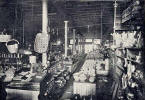 |
 |
 |
| 1911 Promotion |
1911-promotion mark |
Goodwyn Bio |
1903 Interior |
1918 |
321 Main
- 1st Location |
|
|
|
 |
 |
 |
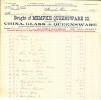 |
 |
| MQC
Warehouse? |
1897
Directory Listing |
1874
Dissaster |
1897
Invoice |
1898
Invoice |
|
|
|
|
As their name implied, the Memphis
Queensware Company sold Haviland "Queensware" - but with a
Memphis-slant. Because they imported so much of the china,
they were able to negotiate with Haviland to have a special
"Memphis Queensware" mark on the back of the china. That
mark dates from 1896. |
 |
| |
Memphis Queensware Mark |
|
|
|
|
|
|
|
|
|
|
After 2 years at 321 Main, the Memphis
Queensware Company moved in 1898 to 330 Main - the Lemmon-Gale
building. It will be forever associated with this
building. There's currently no available record that they
purchased the building, but probably did. In 1905 the
numbering system changed in Memphis and this building became 60-62
S. Main. The Memphis Queensware Co continued to occupy 1/2 of
the building with Lemmon-Gale until 1913, when they moved to a new
building at 121 Union Avenue. Lemmon-Gale stayed until 1920. |
 |
| |
Queensware
Building 1906 |
|
|
|
 |
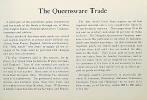 |
 |
 |
 |
 |
| Queenware
1906 |
1911 article |
L.D.Hines
1915 |
1908 Ad |
1906 Article |
1906 Article |
|
|
|
 |
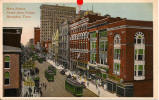 |
 |
 |
|
1906 Queensware Bldg |
1912 Queensware Bldg |
1912 Queensware store |
1898 Queensware Envelope |
|
|
|
|
|
|
|
|
|
|
|
|
|
 |
Memphis Queensware Company .
121
Union Avenue - 1913-1926
In 1913
the Memphis Queensware Company sold their Main Street store and
moved to new quarters at 121 Union Avenue. The name and
the directory listings continued at this location until 1926.
Their ad in the directory also lists their warehouses on Georgia,
Florida, and Carolina streets, near Central Station. The
building at 121 Union, later became the home of the O.K. Houck Piano
Company. |
|
121 Union - today |
|
|
|
|
|
In the
1919-21 American Hardware Magazine and several Clay and Pottery
Magazines, a "sold" announcement was published:
Memphis
Queensware Company had been sold to Warren-Stratton Hardware.
We
have not been able to confirm this anywhere else or find any
additional information about it. ??? |
|
|
 |
 |
 |
|
 |
|
1919-
Sold item |
|
 |
|
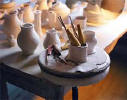 |
|
1914 Article
|
1919 Ad |
1922 Ad - 121 Union |
1919- Sold item |
Pottery Display |
|
|
|
|
|
|
Goodwyn Crockery Co
- Memphis Queensware Co .
75 Union Av .
1921 - 1956 |
|
|
|
In 1921,
notices also began appearing in the Pottery-China magazines that R. D. Goodwyn was "re-engaging in the crockery business" ... and "had
recently formed a new company called Goodwyn Crockery Company" with
offices and showrooms at 75 Union. Although we
cannot confirm it, it appears that Memphis Queensware Co
was sold to Stratton-Warren Hardware in 1919 and Goodwyn retired to Florida. By 1921, he had returned and
started a new company at 75 Union Av at Main. |
 |
|
|
|
 |
 |
 |
 |
 |
 |
| 1921 Article |
1921
Article |
75 Union |
36-40
Carolina today |
409 S.
Main |
1930 Ad |
|
|
|
In 1926
Goodwyn moved his new company from the 75 Union Building to 36-40 Carolina
- where the warehouses were located. At the same time his ads
and letterhead added Memphis Queensware Co to his letterhead,
below Goodwyn Crockery Co. No
separate
listings for Memphis Queensware Co appear in the Directories
after 1926. In 1932, Goodwyn
moved around the corner to 409 S. Main Street (The Puck
Building).
He died in 1948 and his wife took over the business. She was
not good at it and the business failed and closed in 1956.
See the 1930 letterhead (below) where the name of the
company appears in large letters as "Goodwyn Crockery Co" and below
that in smaller letters "Memphis Queensware Co". |
 |
| |
1930
Invoice |
|
|
|
 |
 |
|
 |
|
1925
Goodwyn + Queensware |
|
 |
|
 |
|
1922 - 75 Union |
1926
-
36-40 E. Carolina |
1926 Goodwyn Crockery Only |
Goodwyn Crockery Co -
Memphis Queensware Co |
|
|
|
|
|
|
Major Queensware dealers
... 36 years
before the Memphis Queensware Company |
|
|
 |
Early Memphis distributors of Queensware were
Charles N. Erich, Fransioli & Williamson, and
William Jack.
Evidence from the Memphis directories and documents show that
they began selling Queensware as early as 1860 - 36
years before the Memphis Queensware Company. They all were on Main Street
- Erich and Jack were directly
across the street from each other for many years
and they remained at the same locations until 1896.
Much of the success of Queensware was due to these men.
They weren't the only ones who sold Queensware. By
1890 one could often find Queensware advertising signs like on
the left, outside several other Main Street buildings. |
| |
|
|
|
|
|
Charles N. Erich
was born in
Germany and emigrated to Memphis in 1854. Working at the
Memphis Appeal, he saved enough money during this time to
enter the grocery business. His next step up the ladder
was a small glass and Queensware retail business, where he did
so well that he was able to buy 1/2 interest in Erich & Lloyd.
In 1867 the partners split and Charles opened his own store at
323 Main. His popularity as a business man was due to
his fair dealings and by keeping the largest and complete
stock in the South. He imports the majority of his stock
and travels to Europe each year on buying trips. |
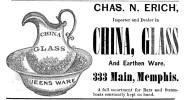 |
| |
1860 Ad -
Queens Ware-2 words |
|
|
|
|
|
|
|
|
|
|
Another early Memphis China dealer
was the
Fransioli Co. at 5 Main Street. Their earliest ad dates
from 1849.
By 1859 they had become Fransioli and Williamson and their shop was
at 188 Main Street next to the Cochran Hotel. In 1860 William Jack leased their
building at 188 Main
(Document below). They may have also merged???
|
 |
| |
Fransioli Co -1849 |
|
| |
|
|
 |
 |
 |
 |
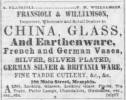 |
 |
|
1859 ...188 Main |
1859
...188 Main |
188 Main |
1859 |
1860 |
1860 |
|
|
|
|
|
|
William Jack
was born in Ireland and immigrated to the United States via
New York city in 1840. He became a naturalized citizen
in 1860 and died in 1903.
He is
listed in the 1849 directory as a "Book Keeper with W. Howard."
The first listing for the William Jack China Company is 1865,
although we have supported evidence that he was in the China business
as early as 1860 with a partner named John T. Shanks. His first directory
business address is 224 1/2 Main
and "Queensware" is mentioned. In 1872 his brother Samuel
joined the company and the following year George E. Rudisell
became a partner. In 1878 the company moved to 332 Main.
That building was destroyed in a major Memphis 1892 fire and
William moves across the street to 321 Main.
William Jack was the biggest Queensware dealer of all the
Memphis dealers... |
|
 |
|
1849 |
|
|
|
|
|
|
|
|
 |
 |
 |
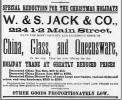 |

 |
 |
|
1865 Jack
Ad |
1865 |
1872 |
1874 |
1892 Fire |
188 Main
|
|
|
|
Below are a timeframe, directory listings, and documents
related to William Jack:
|
|
 |
|
1883 Letter |
|
 |
|
1874 Article |
|
|
1860 ... 301 Main.
William Jack and John T. Shanks were partners. Also
lease 188 Main.
1865 ... 224 1/2 Main. William Jack China. First
listing in Directory. "Queensware" is also listed.
1868 ... 224 1/2 Main. William Jack China. John T.
Hanks becomes partner to sell Queensware.
1871 ... 224 1/2 Main. W Jack. Listing continues
until 1872.
1872 ... 224 1/2 Main. W & S Jack. Brother Samuel
has joined the Company.
1873 ... 224 1/2 Main. W & S Jack & Co. George E.
Rudisell becomes a partner in the company.
1878 ... 332 Main. W & S Jack & Co. New
address.
1883 ... 332 Main. W & S Jack. The partnership
with Rudisell is dissolved.
1884 ... 332 Main. W Jack & Sons. The name
changes.
1892 ...
321 Main.
W Jack & Son. Moves across the street from 332 to
321 Main.
1896 ...
321 Main. W Jack & Sons closes . Is
there a Memphis Queensware connection??? |
|
|
|
|
|
 |
 |
 |
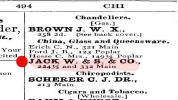 |
 |
| 1865
Directory Listing |
1867 |
1870 |
1878 |
1882 |
|
|
|
|
- Most of the
Documents below are from the Collection George Whitworth |
|
|
|
|
|
|
|
General William Sherman vs. Fransioli &
Williamson-William Jack in Memphis, 1861 |
| |
|
|
|
|
When the Civil War
began, a Memphis company, Fransioli & Williamson defaulted on
a note to a northern company. General William Sherman was assigned
to Memphis during the occupation, and he ordered collection of
the note.
Inscribed on the back of the Promissory Note and Notice of
Protest "To the provost marshal. Collect this note in
cash or kind. Major General W. T. Sherman, Memphis,
Tennessee". |
 |
 |
 |
| |
Sherman by Bishop-Needles |
Promissory Note |
Sherman
note/Signature |
|
|
|
 |
 |
 |
 |
 |
 |
 |
| 1872 Invoice |
1873 Partnership |
1874 Invoice |
1875 Lease |
1875 Lease-2 |
1883 Dissolution |
1883 Invoice |
|
|
|
|
Two very interesting letters written by William Jack in 1903 -
interesting because they're written on the
BACK of Memphis Queensware Co letterhead. Where did he get
this stationery? There must be a "connection".
By now, William Jack was an old man and we
suspect he could have been a "silent partner" in
the new company and may have had an office in the 330 Main
Street Queensware Building, where he would have easy access to
the stationery. It's also possible that as a Queensware
authority, he would have been a consultant to the new owners.
We don't know... until new evidence is found. |
 |
 |
| |
1903 Letter |
1903 Letter |
|
|
A 1883 directory lists the W & S Company and ALSO the
"JACK BROTHERS". Did they go into business for themselves?
Were they instrumental in setting up the Memphis Queensware
Company with their father? This one-time listing was for 1893
only and may have been because the building at 332 Main was destroyed
by fire in 1892 and was being rebuilt. But it appears that
the Jack's had a semi-permanent lease on the 224 1/2 Main
Street building. Perhaps it was for storage? |
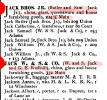 |
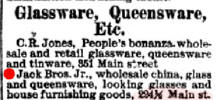 |
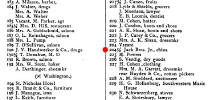 |
|
|
1883 Directory
Listings for Jack Brothers |
|
|
|
|
Three 1895 Invoices (below) place the W & S Jack Co at 321 Main
Street - the
exact store that will house The Memphis Queensware Co store
one year later. The 4th photo shows an 1895 Jack Invoice
above a 1897 Queensware Invoice. Both are located at
321 Main Street. The layout and the
wording of the two invoices are identical. Only the names
are different. Still there is no physical evidence to link
Jack and the Memphis Queensware Co. but it does appear that one
continues where the other left off??? |
|
|
 |
 |
 |
 |
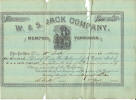 |
|
Three 1895 Invoices showing W & S Jack Co at 321 Main Street |
Queensware . 321 Main |
1892 Stock Certif. |
|
|
|
|
|
The Memphis Directories have ended our search to physically
connect the Jack family to the Memphis Queensware Company.
And the information in the directories says a lot about the
Jack Family. They did not establish roots. Most of
them, especially William, moved a lot - almost every other
year. And they frequently changed jobs or occupations.
When the Memphis Queensware Company opened in 1896 John D.
Jack became the first bookkeeper and held that position until
1903. In 1898 William, himself, became a clerk -
through 1902. His brother Samuel also became a clerk in
1900 and then a bookkeeper for 2 years. In 1900-1902,
three members of the Jack family were at the Memphis
Queensware Company, simultaneiously.
|
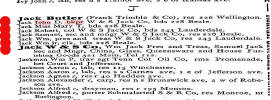 |
| |
1895 |
|
|
|
|
|
|
|
|
William Jack died in 1903. In 1904 Samuel and John D. are
still listed as bookkeepers of the Memphis Queensware Company,
but in 1905 not one member of the Jack family is still
associated with the company. Samuel now runs the Trimbele
Cigar and Billard Co and John D. is secretary-treasurer for the
same company. We've not found any additional Jack family
association with china or Queensware since 1904. |
 |
 |
| |
1905 |
1910 |
|
|
|
|
|
|
|
|
|
 |
<
This 1864 Atlanta photo has new meaning as research continues on
"Queensware". |
|
1864 Atlanta |
|
|
|
|
|
|
|
Lawrence Furniture Co .
1933 - 1973 |
|
|
|
In 1933 the Lawrence Furniture
Company
opened next door to the Warner Theater in the old Queensware
Building. They placed regular ads in the city's
newspapers. And after awhile, one thought Lawrence
Furniture would be there forever. But in 1973, they ran an
ad for a 3-day sale. No mention was made about going out
of business. This was their last advertisement.
There were no more listings in the city directories.
Lawrence Furniture simply disappeared after 40 years. The
building remained boarded up for years and was headed for
certain "Memphis Demolition" until it was recently renovated for
apartments - now known as "The Washburn". |
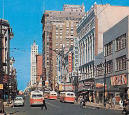 |
| |
Lawrence |
|
|
|
 |
 |
 |
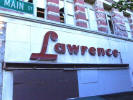 |
 |
 |
|
Lawrence at Night |
Lawrence |
Lawrence |
Lawrence - Boarded |
Renovation |
The
Washburn |
|
|
|
|
The Queensware
Building has never been placed on the National Registry List.
Why? |
|
|
|
|
|
|
|
|
|
|
|
Queensware and
Memphis Queensware Co. Memorabilia |
|
|
 |
 |
 |
 |
| Barbara Murphy |
MQC Creamer |
Queensware
Souvenir |
Queensware
Souvenir |
|
|
|
|
|
|
|
|
|
|
|
|
|
|
|
|
|
|
|
|
|
|
Credits |
|
|
|
The
Historic-Memphis website does not intentionally post copyrighted
photos and material without permission or credit.
On
occasion a "non-credited" photo might possibly be posted because we
were unable to find a name to give credit. Because of the nature of
our non-commercial, non-profit, educational website, we strongly
believe that these photos would be considered "Fair Use. We have
certainly made no monetary gain, although those using this website
for historic or Genealogy research have certainly profited. If by
chance,
we have posted your copyrighted photo, please contact us, and we'll
remove it immediately, or we'll add your credit if that's your
choice. In the past, we have found that many photographers
volunteer to have their works included on these pages and we'll
also do that if you contact us with a photo that fits a particular
page. |
|
|
|
The "Historic-Memphis" website would like to acknowledge and thank the
following for their contributions which helped make this website
possible:
Memphis
Public Library, Memphis University Library, Memphis Law Library,
Memphis Commercial Appeal, Memphis Press Scimitar, Shelby County
Register of Deeds, Memphis City Schools, Memphis Business Men's
Club, Memphis Chamber of Commerce, Memphis City Park Commission,
Memphis Film Commission, Carnival Memphis, Memphis Historical
Railroad Page, Memphis Heritage Inc, Beale Street Historic District,
Cobblestone Historic District, Memphis Historic Districts, Vance
Lauderdale Family Archives, Tennessee State Archives, Library of
Congress, Kemmons Wilson Family, Richard S. Brashier, Lee Askew,
George Whitworth, Woody Savage and many individuals whose assistance is
acknowledged on the pages of their contributions. Special
thanks to Memphis Realtor, Joe Spake, for giving us carte blanche
access to his outstanding collection of contemporary Memphis photos.
We do not have high definition copies of the photos on these
pages. If anyone wishes to secure high definition photos,
you'll have to contact the photographer or the collector.
(To avoid any possibility of contributing to SPAM, we do not
maintain a file of email addresses for anyone who contacts us). |
|
|
|
|
|
|
|
|
|
|
<><><><><> |
|
|
|
|
|
|
|
|
|